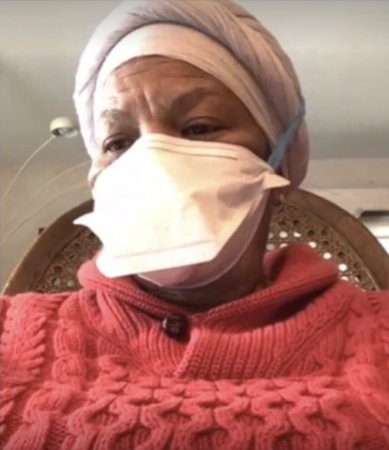Meet Wendy, a vibrant senior in the JEVS Assistive Technology Services program. For 41 years, Wendy taught physical education, health, coached cheerleading, and choreographed dance, for the School District of Philadelphia. Now age 72, Wendy has since retired from the school district, or as she prefers to call the change, graduated; “I call it graduated because I never would ever retire. I will always teach and learn, so I move forward.”
When an accident caused Wendy to lose her vision, she was referred to the JEVS Assistive Technology program through the NJ Commission for the Blind and the Jewish Community Center (JCC) of Cherry Hill, New Jersey. As a result, Wendy had an in-home visit from Madeline Laquer, certified Assistive Technology Professional (ATP) at JEVS Human Services, to perform an assessment.
Assistive Technology Services allows individuals to work around their challenges and perform functions that might otherwise be difficult or impossible. Along with specific devices, software or equipment, Assistive Technology Services also includes direct training and instruction to the individual, family and/or care team.
According the Center for Disease Control, Disability and Health Data System, almost 26% of adults, including one in every four women in the United States, report having a disability.1

In Wendy’s case, her assessment showed she could benefit from a variety of AT devices, including an iPhone upgrade, an iPad, an Amazon Alexa, and a ‘smart’ cane, along with applications including talk-to-text and Siri to help with everyday tasks.
On her own, Wendy found flat screen devices discouraging, “it frightened me to have something that was flat screen that I couldn’t feel,” she recalls. “I’ll never learn how to. Well smack my lips, because not only have I learned how to use it, but I’ve now bumped up from an iPhone 6 to a 13. And I’m still learning.”
Active in two Bible study groups, Wendy’s next goal is to use the online meeting platform Zoom. “Listen, I am so excited and all I want to do is know how to do Zoom so I could show my face and have my red lipstick on!” With guidance from Madeline on her iPad, Wendy is learning how—but its not just about the platform, its all of the details associated with joining an online meeting. “I’m also learning that everybody who’s doing the Zoom feature has different ways of sending their text to me, and she’s also explaining it. I love the details that she gives me. I’m a detailed person, but very energetic and I wanna move fast. I am learning to slow down. Take my time and practice. That’s the whole thing. I’m back in school, and I love it.”
“And I’m reaching out to other people who are visually challenged in one way or the other to let them know how amazing it is to be interdependent as I used to be, independent.”
The use of Assistive Technology (AT) often results in increased independence, safety, and autonomy. Watch this video and hear from Wendy herself about her experience with Assistive Technology.
1.Centers for Disease Control and Prevention, National Center on Birth Defects and Developmental Disabilities, Division of Human Development and Disability. Disability and Health Data System (DHDS) Data [online]. [Accessed August 6, 2019].https://www.cdc.gov/ncbddd/disabilityandhealth/infographic-disability-impacts-all.html
Posted in Blog Client Spotlight JEVS Program: Assistive Technology Services